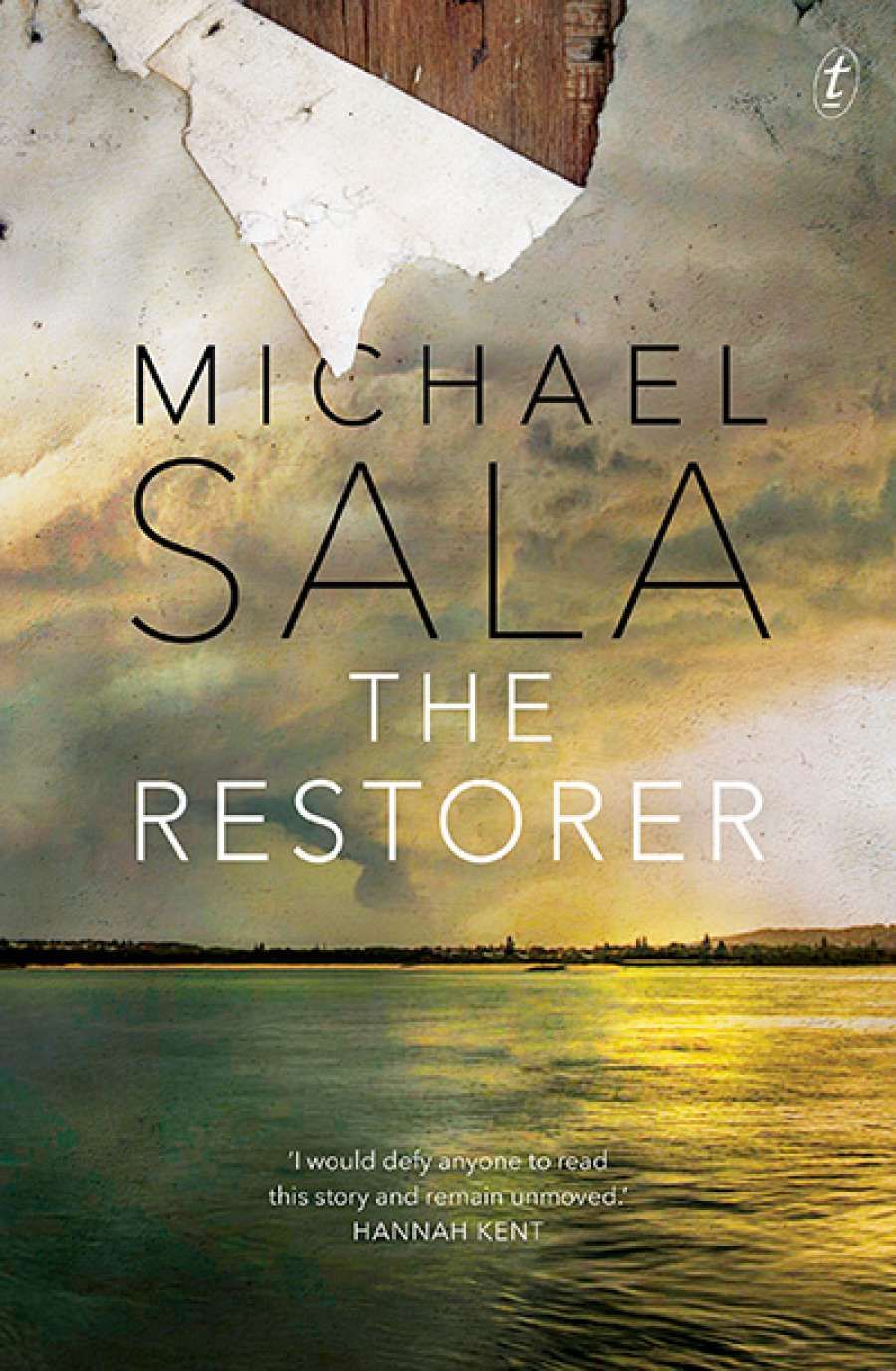
- Free Article: No
- Contents Category: Fiction
- Custom Article Title: Blanche Clark reviews 'The Restorer' by Michael Sala
- Book 1 Title: The Restorer
- Book 1 Biblio: Text Publishing $29.99 pb, 352 pp, 9781925355024
As Freya helps move the family’s few possessions into the house, we observe Roy’s desperate enthusiasm for the potential of the house that he plans to restore and Maryanne’s wariness after a year’s separation and her concern for eight-year-old Daniel, who appears to have a learning difficulty. Tension pervades the book, a sense that Roy or someone else is going to snap. For Freya, that tension extends beyond the house to the jeers she endures from boys in passing cars and the threat of violence from bullies who pick on her friend Josh. Later, her anger at the hypocrisy of adults and her lack of control over her circumstances will manifest themselves in drug-taking, shoplifting, and truancy. Sala also gives weight to Freya’s teachers, balancing their influence against that of her friends and family. There is a moment of comic relief when the English teacher Mrs O’Neil delivers a humorous lecture on how hormone-addled teenagers shouldn’t trust their instincts.
Sala’s prose is precise and evocative, and his descriptions of the weather and the state of the house are often linked to characters’ emotions. For example, when a storm cuts the power to the house, Freya is hypersensitive to the sound: ‘The rain sounded like it was crashing down on her skull.’ Maryanne feels like something in the house is set against her. ‘The house loomed over her, its edges growing vague against the sunless sky, but the blistered paintwork on the windows, and the salt-pitted brickwork, the roof with half its gutter hanging loose, were easy enough to make out. She could imagine it all collapsing on top of her.’
Roy is presented as a charming, good-looking man who is also insecure, hot-tempered, and rigid in his thinking. It is not a sympathetic portrait, but it is clear what provokes and annoys him, particularly Daniel’s carelessness. The family barely acknowledges Roy’s meticulous restoration of the floorboards, and windows, which adds to his frustration. More nuanced is Maryanne’s love for Roy and the behavioural patterns that cannot be erased by a new location. These patterns go back to Roy’s father and Maryanne’s rejection of her mother’s domineering manner, and project forward to Freya’s outburst in class and her attraction to a local hooligan.
The era the novel is set in becomes apparent when Freya and Josh play video games on a Commodore 64 and the Tiananmen Square protests lead television news reports. Newcastle’s history, too, is woven into the narrative, giving the novel a strong sense of place. Freya and Josh swim in the Bogey Hole, a convict-built ocean swimming pool, and Maryanne works as a nurse at the Royal Newcastle Hospital, its tenuous future also part of the novel’s fraught tone. (The hospital was demolished in 2014 and replaced by a hotel and apartments.)
 Michael Sala (photograph by Kimiko Yoshinaga)
Michael Sala (photograph by Kimiko Yoshinaga)
Richard, a gay neighbour, is not so well drawn. He seems superfluous for half the novel, until the family’s painful secret is revealed and his role as Maryanne’s confidant becomes clear.
Freya and Josh’s dialogue is contrived at times, but Sala is masterly with his construction of Maryanne and Roy’s arguments. The loss of control is articulated through Maryanne’s memory of one fight.
She couldn’t even remember why, did not know so much the substance of the exchange that had led to the fight, only its shape, the sudden twist of words that had opened something beneath them, and there they’d been, sliding into it.
Sala’s début novel, The Last Thread (2012), was a fictionalised account of his childhood in the Netherlands and Newcastle in the 1980s and the traumatic incidents that influenced his adult life. (It won the 2013 NSW Premier’s Award for New Writing and was the regional winner [Pacific] of the 2013 Commonwealth Book Prize.) In The Restorer, Sala again delves into the legacy of childhood trauma, but there is a new immediacy and assured cohesiveness in the construction of this novel.
The dichotomy between the suppressed first half and the dramatic second half may deter readers looking for more consistent action. But Sala’s use of realism emphasises how the threat of violence can be as destructive as the actual violence.


Comments powered by CComment